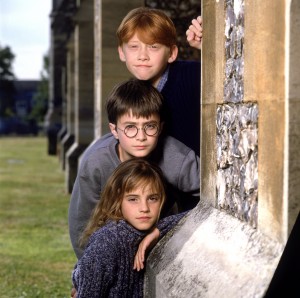It can be hard to see the movie industry as an industry. After all, films help viewers escape the day-to-day grind of life. Films let viewers set aside their worries and work for a time and just be entertained. Movies may take people away from their business, but the industry that makes films is one of the most cutthroat businesses around.
![Johnny Depp and Orlando Bloom in a scene from Pirates of the Caribbean. As seen in the book 'Jerry Bruckheimer: When Lightning Strikes' by Michael Singer - photo by Peter Mountain, courtesy of Disney [Via MerlinFTP Drop]](http://universe.byu.edu/wp-content/uploads/2016/01/pirates-of-the-caribbean-the-curse-of-the-black-pearl_zyru0j-300x200.jpg)
For instance, a movie like “Pirates of the Caribbean” found success at the box office. Before too long, audiences were treated to “Pirates of the Caribbean 2.” And then a third and fourth version. In December 2016, a fifth will hit theaters.
According to popular movie rating websites IMDb and Rotten Tomatoes, each installment in the “Pirates” franchise has been worse than the last, and yet they keep coming because audiences keep going to see them.
“Hollywood is full of wonderful artists who want to make wonderful art,” said Mariah Johnson, a BYU junior studying film. “But the fact remains, tickets have to sell. Movies have to appeal to a wide audience. I hate to say that it’s all about the money, but studios need to sell, and if a movie worked once, chances are good that it’ll work again.”
The four “Pirates” movies have combined to rake in more than $1.2 billion, and it’s not even the highest grossing series. The “Transformers,” “Fast and the Furious” and “James Bond” franchises have all amassed absurd sums of money. The “Harry Potter” films brought in even more.
But nothing compares to the king of movie sequels: the Marvel Cinematic Universe.

The whole thing began in 2008 with “Iron Man.” It was truly remarkable; Marvel took a little-known superhero, hired a recovering drug addict to play him and grossed nearly $600 million. During the closing credits of the film, Samuel L. Jackson’s Nick Fury approached Iron Man and hinted at an upcoming movie featuring not just him but other superheroes as well. He called it “the Avengers initiative.”
With that, a universe was born. Since the release of “Iron Man,” Marvel has produced two Iron Man sequels, two Thor movies, two Captain America movies, an Incredible Hulk movie, two Avengers movies, an Ant-Man movie and the wildly successful “Guardians of the Galaxy.” The studio plans to release 11 more films over the next four years.
“Sometimes sequels do improve on the original,” said director Travis Cluff, whose horror film “The Gallows” received a widespread theatrical release earlier this year. “Some of these Marvel movies have probably done that.”
The success of these franchises has allowed Marvel to make money in an effectively risk-free atmosphere.

“It’s a guaranteed market,” said BYU film professor Doug Cunningham. “There’s no risk involved. If the audience is hooked on the first episode, they’re going to come back the next time. They’re familiar with the world of the film, they’ve developed an affinity for the characters. As a result, they’ll show up again and again.”
Making money is more vital to studios than ever before. The cinematic market has dramatically destabilized with the advent of streaming services like Netflix and Hulu.
“People are making a mass exodus away from the cinema and toward television,” Cunningham said. “That’s why, for the foreseeable future, I think this trend will continue exactly how it is. But a proliferation of sequels isn’t necessarily a bad thing. Hollywood will produce whatever the audience enjoys; it’s the basic law of supply and demand. These sequels and remakes are the films that keep Hollywood in business.”
The epidemic of movie sequels also occupies a strange place in the world of novel-to-film adaptations. In 2010, Warner Bros. announced that the seventh book of J.K. Rowling’s beloved Harry Potter series would be split into two feature films: “Harry Potter and the Deathly Hallows: Parts 1 and 2.”

“In that case, it was necessary,” Johnson said. “That was a huge book with a lot of stuff in it. But it’s evolved into an absurdity in other cases. Splitting books frustrates me, to be honest, because most of the time, the source material isn’t long enough to warrant it.”
Since Warner Bros.’ successful split of the final “Potter” book, other studios have followed suit. “Twilight: Breaking Dawn” and “The Hunger Games: Mockingjay” were both turned into two movies. J.R.R. Tolkien’s “The Hobbit,” a three-hundred-page story, was turned into three.
“I only saw the first one, because I could sense it was just being dragged out,” Cunningham said. “There was definitely an effort to try and milk it to the greatest degree possible.”
This proliferation of movie sequels and remakes has left many cinephiles yearning for more original content.

“The market is changing so dramatically that studios have a lot more fears about a new idea than about something that’s been proven to work,” Cluff said. “It takes the right director with the right vision, and occasionally that’ll give us something like ‘Inception’ or ‘Interstellar.’ But in the end, the studios have to bet, and they’re playing the game that gives them the best odds.”
Moviegoers are often outspoken about their disdain of the movie industry’s industrial nature. But some suggest viewers may be at least partially to blame.
“People always say that they want something new out of Hollywood,” Cluff said. “But when they come out with something new, people stay at home.”




